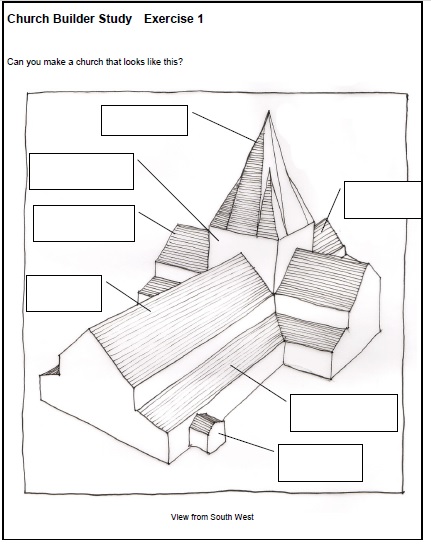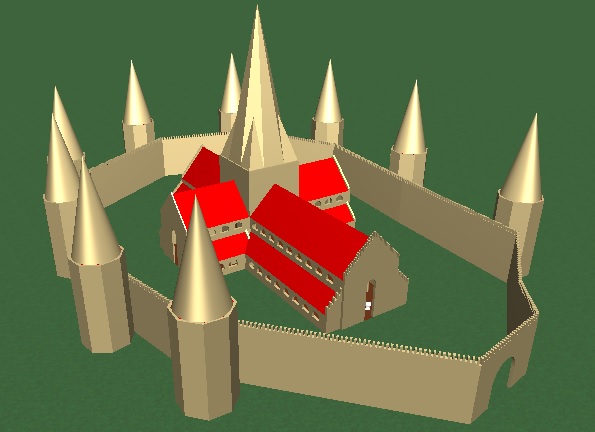The Builder tools are being developed with a target user group that includes primary and secondary school children. The limited time available within the educational curricula for 3D modelling drives the design of the tools. Users need to learn and get benefit from the tools quickly and that is what we believe the tools provide.
Here is a report on the first trial of our steam locomotive building tools – at St Anne’s RC Primary School, Ormskirk:
Locomotive-Building-at-St-Annes-RC-Primary-School-June-2014
Here is the slideshow we used and that is referred to in the report: LocomotiveBuilder-Introductory-slide-show-Jun-2014
Here is a report on the first trial of the ship building tools – at St Anne’s RC Primary School, Ormskirk:
Report-on-Builder-Session-at-St-Annes-RC-Primary-School
Here is the slideshow we used and that is referred to in the report: ShipBuilder-Introductory-slide-show-June-2013
The following sections describe the educational aspects of the tools.
- ChurchBuilder
- Pedagogy
- Why churches?
- National Curriculum
- Teacher resources
- ThingBuilder and ScenarioBuilder
ChurchBuilder
Pedagogy
ChurchBuilder was initially aimed at primary school children aged between nine and 11 years (Years 5 and 6 in the UK). The objective was to produce an educational tool that children could learn to use in 15 minutes and create realistic, complex models quickly. We believe we are meeting this objective.
The original concept was to provide a educational tool kit for modelling a range of types of buildings including churches, castles and palaces that could be placed in a virtual world modelling the heritage of their locality that could be shared across Europe via the World Wide Web. ChurchBuilder is the first component in this tool kit.
We have trialled ChurchBuilder in a number of primary schools throughout the Merseyside area since July 2005. The response from the children has been very positive. This was in spite of the awkward interfaces employed in our early versions of the software as we explored different approaches. We found the children quickly picked up the church architecture terminology and quite happily talked in terms of naves, chancels, towers and transepts when building their models. They coped very well with the software especially as we changed it in responses to their experiences. The current version of ChurchBuilder has been found to be very intuitive after an initial introduction.
Why churches?
We have been asked for school builders, castle builders, mosque builders and so on. All these are possible, but we had to start somewhere. We chose to model churches because:
- they are big, sometimes complicated, buildings providing a rich variety of components to engage the modeller
- traditional, Gothic style churches are built to rules that make it easy to identify a sequence in which the models can be built
- the real thing is never far away – every community in the UK has a church of some sort. In contrast, most people do not live near a castle. Thus, a school trip to the local church to carry out observations, photographing and measuring is much easier to organise
- the buildings are often an important repository of the history of a community. We believe that engaging the children through modelling is a great opportunity of giving the children a sense of that history
- many schools in the UK are associated with local churches and ChurchBuilder gives a further opportunity of strengthening the association We like church architecture. We can build models of churches and walk about them using the ChurchBuilder tour facility or else export them to web pages and explore them using a 3D viewer such as Cortona
- we can also make video clips and JPEG pictures of the models using ChurchBuilder
- we have learned a lot while making ChurchBuilder. The lessons will be applied to producing CastleBuilder etc
ChurchBuilder started life as the first of a set of proposed tools to enable children to model their local heritage and place it on a shared virtual world so that it would be visible to partner developers across Europe and visitors from all over the world. Churches are usually the oldest and most historical buildings in the locality and provide a rich subject for modelling. It was also intended to show the heritage changing over time. Individual churches have changed considerably over time with additions and alterations made in different architectural styles. Also, physical changes were brought about by changes in religious practices – for example the removal of wall paintings during the English Reformation.
ChurchBuilder provides an opportunity to create a dynamic model showing how a church developed and changed over time.
National Curriculum
UK National Curriculum areas addressed by ChurchBuilder include:
- number
- shape
- space measures
- handling data
- scientific enquiry
- materials and their properties
- working with tools
- knowledge and understanding of components
- finding things out
- developing ideas
- exchanging and sharing information
- all areas of History and Geography
- exploring and developing ideas
- investigating and making art
- religious education
Teacher resources
Here are some resources you may find helpful in planning how to use ChurchBuilder.
All the documents are in PDF format.
You need the Adobe® plugin which is available free at
http://get.adobe.com/uk/reader/
ChurchBuilder was originally developed for school children (although there is nothing to prevent adults from building churches too).
CB-TeacherTips-GettingStarted
CB-TeacherTips-UsingTheSoftware
CB-TeacherTips-Exporting
CB-TeacherTips-Glossary
CB-Introductory-slide-show-2012
When we started trialling ChurchBuilder to Year 5 and 6 classes in primary schools in the Merseyside area, we created an introductory slide show that explained to the children the structure of a traditional church. The slide show reinforces this by showing photographs of examples inviting the children to name the parts. They love coming out to the Smart Board or projector screen to point to the next bit.

Further reinforcement is provided by this work sheet which asks them to identify the parts. Once they have finished, you can go through the corresponding set of slides to confirm the answers with them. After this they are ready to be unleashed on ChurchBuilder !
Here is an additional pupil workbook that the children can use to reinforce their learning about churches.
Here is an example of the churches that two of the Year 6 children made:

ThingBuilder and ScenarioBuilder
We ran our first trial at St Anne’s RC Primary School in Ormskirk in June 2013. We ran the session twice. One Year 6 class had their session in the morning. The other class had their session in the afternoon. It was considered a great success.
The session consisted of nine stages:
1. Demonstration of the Liverpool Scenario
2. The vocabulary of ships
3. Annotation of drawings of ships
4. Demonstration of building a ship with ThingBuilder
play time
5. Children using ThingBuilder to build a ship
6. Demonstration of ScenarioBuilder
7. Children adding their ships to a scenario
8. Demonstration of manual control of a ship
9. Children manually controlling their ships in the scenario
Here are the documents we used:
Ship-Builder-Session-Plan-Jun-2013
ShipBuilder-Introductory-slide-show-June-2013
ShipBuilding-Exercises
Thing-and-Scenario-Builder-Quick-Guide
Here are two of the models the children made:

Here is the report: Report-on-Builder-Session-at-St-Annes-RC-Primary-School
